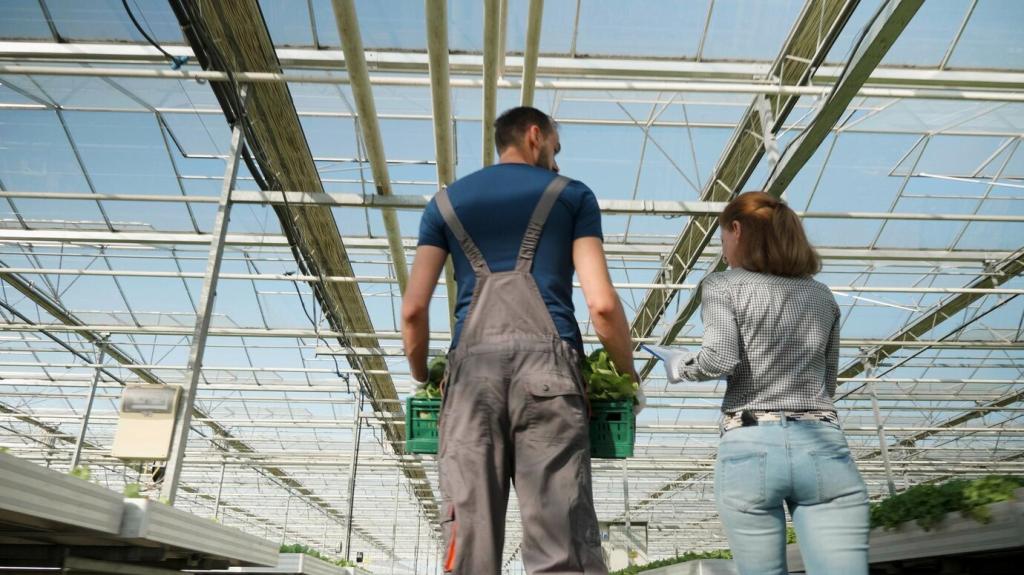
Environmentally Safe Ways to Protect Outdoor Furniture
Chosen theme: Environmentally Safe Ways to Protect Outdoor Furniture. Step onto your patio with confidence and a clear conscience. Together, we’ll safeguard your chairs, benches, and tables using planet-friendly methods, inspiring stories, and practical steps you can try today. Subscribe, comment, and share your wins so our community can grow greener, one backyard at a time.
Know Your Materials: Eco-Safe Protection Starts Here
Teak and acacia appreciate penetrating oils, while powder-coated aluminum prefers gentle cleaning and a thin protective wax. Natural rattan needs shade and low-moisture cleaning. A single harsh solvent can undo months of mindful care, so choose purposefully and protect both furniture and soil.
Cleaning the Green Way
Soap, vinegar, and baking soda—small pantry, big impact
A few drops of biodegradable dish soap in warm water lifts dirt without stripping finishes. White vinegar tackles mineral spots. Baking soda safely boosts scrubbing power. Mix light solutions first; you can always repeat. The goal is clean surfaces, not scorched coatings or damaged garden beds.
Microfiber and soft brushes
Microfiber cloths trap grime with minimal detergent, and soft-bristle brushes reach weaves and slats without gouging finishes. Work with the grain for wood, and rinse cloths frequently. Many readers report fewer scratches and a brighter sheen simply by switching to gentler, slower, circular strokes.
Rinse routines that save water
Use a bucket and a low-flow nozzle, prioritizing targeted rinses over wide sprays. Collect greywater for non-edible plants if local rules allow. A brief final rinse at low pressure prevents splashback contamination. You’ll conserve water while avoiding runoff that can carry residues into nearby soil.
Natural Sealants and Coatings
Raw vs. polymerized linseed and pure tung oil
Raw linseed cures slowly and suits patient, layered applications; polymerized versions cure faster with lower odor. Pure tung oil repels water exceptionally well and resists mildew. Avoid petroleum-heavy blends masquerading as natural. Last summer, tung oil kept a cedar bench glossy through five storms without peeling.
Beeswax and carnauba blends
A thin beeswax-carnauba paste over cured oil adds a hardy, low-gloss shield. It buffs beautifully, reduces staining, and avoids plastics. Apply sparingly to prevent buildup, and re-buff seasonally. One reader loves the subtle honey scent that fades quickly but leaves a warm, tactile finish behind.
Timing and curing tips
Coat during mild, dry weather. Thin coats cure more fully and reduce tackiness. Elevate legs on blocks to prevent moisture wicking while drying. Patience here is everything: rushing often causes clouding, uneven gloss, or sticky armrests that attract dust and pollen right after you set cushions.
Weather Defense without Harm
Breathable covers made from recycled fabrics
Choose covers labeled breathable and PVC-free, ideally from recycled polyester with PFC-free water repellency. Tight seams, soft linings, and adjustable hems reduce chafing. Breathability limits trapped moisture, which is the real villain behind mildew and warped slats. Store covers dry and folded to extend life.


Smart placement and airflow
Create shade with umbrellas or pergolas rather than heavy chemical sunscreens. Space pieces to allow wind to circulate, preventing condensation pockets. Even shifting a bench six inches off a splash zone can halve water exposure. Use risers on damp decks so legs don’t wick moisture from boards.
Mold, Mildew, and Pests—Non-Toxic Prevention

Tea tree, lavender, and cedar solutions
A few drops of tea tree or lavender oil in water can refresh musty areas on finished surfaces. Cedar oil helps deter moths and some ants around storage spaces. Always test and dilute. These aromatic aids support prevention, not cure; address moisture first for lasting, clean results.

Sunlight and spacing strategies
Short bursts of morning sun dry damp fibers and reduce mildew risk, especially on cushions and woven seats. Rotate pieces to expose hidden sides. Keep planters slightly distanced from legs to curb splashback. Simple spacing prevents dark, stagnant microclimates where mold finds easy, damaging footholds.

Safe hardware and barriers
Use stainless or galvanized hardware to deter rust without chemical rust-inhibitors. Silicone feet or cork pads lift frames above puddles. Fine copper mesh under benches can discourage slugs without pellets. By designing gentle barriers, you protect finishes, your patio’s ecosystem, and curious pets roaming around.


Repair, Refinish, and Upcycle Sustainably
For scratches, sand just the affected area with fine grit, feather edges, and re-oil. Replace a single slat rather than the entire seat. Touch-up paints with low-VOC formulas blend surprisingly well. The less material you disturb, the more original character and embodied energy you preserve thoughtfully.
Repair, Refinish, and Upcycle Sustainably
Attach a HEPA vac to your sander or use hand blocks outdoors with a drop cloth to capture dust. Wear a simple respirator. Gentle passes prevent gouges and reduce rework. Fewer aggressive grits means fewer micro-scratches that drink finish, saving oil, time, and unnecessary environmental overhead.
Labels, Science, and Trustworthy Claims
What certifications actually mean
GREENGUARD Gold signals low emissions; EU Ecolabel evaluates lifecycle impact; FSC assures responsibly sourced wood. No seal is perfect, but credible marks reduce guesswork. When comparing products, prioritize transparent documentation over vague claims so your patio stays healthy for people and pollinators alike.
Decode safety data sheets
Scan SDS sections for VOC content, hazard statements, and disposal guidance. Look for water cleanup and minimal PPE requirements. Avoid products with persistent bioaccumulative toxins. Understanding these basics turns shopping anxiety into confidence and keeps leftovers from becoming problematic household waste months later.
Avoid greenwashing
Beware of labels shouting natural without ingredients or certifications. If a company won’t disclose resin types or additives, pause. Ask customer support for details. Your questions push the market forward, and other readers benefit when you share honest feedback in our comment thread below.

